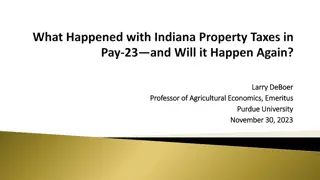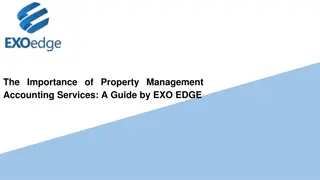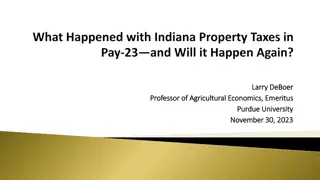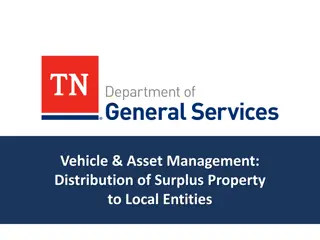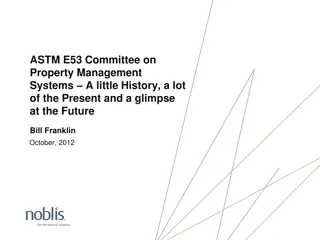5.
This content explores the Distributive Property in math, focusing on simplifying expressions by multiplying and adding terms within parentheses. You'll find examples, practice problems, and tips to master this fundamental concept.
Download Presentation

Please find below an Image/Link to download the presentation.
The content on the website is provided AS IS for your information and personal use only. It may not be sold, licensed, or shared on other websites without obtaining consent from the author.If you encounter any issues during the download, it is possible that the publisher has removed the file from their server.
You are allowed to download the files provided on this website for personal or commercial use, subject to the condition that they are used lawfully. All files are the property of their respective owners.
The content on the website is provided AS IS for your information and personal use only. It may not be sold, licensed, or shared on other websites without obtaining consent from the author.
E N D
Presentation Transcript
5. -4k 3 = 21 +3 +3 4k = 24 4 4 6. ? 4+ 5 = 12 12 12 ? 4= -7 -4 m = 28 ? 4= -7 -4 k = 6
5. -4k 3 = 21 How do we fix it? -4k 3 = 21 +3 +3 Let s do the check: WRONG: -4k 3 = 21 -4(6 6) 3 = 21 -24 3 = 21 -27 = 21 oh dear! RIGHT: -4k 3 = 21 -4( ) 3 = 21 3 = 21 = 21 +3 +3 4k = 24 4 4 k = 6
This one has the mistake in the first step. Let s redo the problem: 6. ? -4 m = 28 Check (WRONG): 28 4+ 5 = 12 -7 + + 6 = 12 -1 = 12 4+ 5 = 12 12 12 ? 4= -7 ? 4= -7 -4 ? 4+ 5 = 12
M08.B coefficients, including equations whose solutions require expanding expressions using the distributive property and collecting like terms. M08.B- -E.3.1.2 E.3.1.2 Solve linear equations that have rational number
We see the Distributive Property when there is a number multiplied times a quantity. (Parentheses are used!) Here are examples of expressions we would use the Distributive Property to simplify. 1. 3(4 + 6) 2. 6(6 9) 3. 2(3x 7)
To simplify the expression you multiply the number outside the parentheses times the terms inside the parentheses. Then add. 1. 3(4 + 6) = 3 4 + 3 6 12 + 18 30
Simplify. 2. 6(6 9) = 6 6 6 9 36 54 -18 3. 2(3x 7) = 2 3x 2 7 6x 14 That s all!
Lets practice! Simplify these expressions using the Distributive Property. 1. 3( 2x + 5) 2. -5(a + 25) 3. 10(3 2y)
Simplify these expressions using the Distributive Property. 1. 3( 2x + 5) 6x + 15 2. -5(a + 25) 3. 10(3 2y) 30 20y -5a + -125 or -5a 125 Did you get them all?
Sometimes simplifying expressions gets tricky! -3(2x 5) Be careful when you simplify this one!
-3(2x 5) You can think of this problem 2 ways: First as is. This gives you a double negative. -3 2x - - -3 5 -6x - -15 -6x + 15
Second rewrite the expression: -3(2x 5) = -3(2x + + -5) -3 2x + + -3 -5 -6x + 15
Simplify these expressions. 4. -3(5n 4) 5. 2(3x 9) 6. -7(5y 6)
Check your answers! The next three you ll turn in for a grade! 4. -3(5n 4) = -15n + 12 5. 2(3x 9) = 6x - 18 6. -7(5y 6) = -35y + 42
Simplify these expressions using the Distributive Property. 7. 3(2n + 5) 8. 2(3k 7) 9. -4(x + 4) Submit through Teams.
We use the Distributive Property when simplifying an expression. (We were just working on that.) Sometimes it is necessary to use the Distributive Property when solving multi-step equations. (Now we are going to do this.)
Solve this equation! A. 3(x 4) = 21
3(x 4) = 21 3x 12 = 21 Just use the distributive property, then solve like normal! Here is the first step. Please solve this equation for x.
3(x 4) = 21 3x 12 = 21 +12 +12 Look at the check: 3(x 4) = 21 3(11 4) = 21 (do the parentheses first!) 3x = 33 3 3 x = 11 3(7) = 21 21 = 21
We are going to use the Distributive Property to solve multi-step equations. Try this one: B. 3(x 5) = 21
We are going to use the Distributive Property to solve multi-step equations. B. 3(x 5) = 21 3x 15 = 21 Then, you can solve the rest like usual. Check when you are done!
3(x 5) = 21 3x 15 = 21 +15 +15 3x = 36 3 3 Did you do the check? x = 12
3(x 5) = 21 3x 15 = 21 +15 +15 3x = 36 3 3 3(x 5) = 21 3(12 5)= 21 3(7) = 21 21 = 21 x = 12 How did you do?
Review Sheet for quiz #1-6 turn in by 7:30 AM Sept 17.
Solve these equations. You will need to use the Distributive Property. Check problem. 1. 6(x 2) = 24 Check each 2. 5(m 4) = -20 3. -3(2y + 5) = 21
4. 12 = 2(3x - 4) 5. 15 = 5(2x + 1) 6. -4(2n + 4) = 24
Yes, there can be some tricky situations when working with the Distributive Property. For example: C. -3(2x 4) = -12 Try this problem!
Solve the equation. Show all steps including the check. C. -3(2x 4) = -12
Solve. -3(2x 4) = -12 -6x + 12 = -12 - 12 -12 Check -3(2x 4) = -12 -3(2 4 4) = -12 -3(8 4) = -12 -3(4) = -12 -12 = -12 -6x = -24 -6 -6 x = 4
Solve each equation. Show all steps including the check. 7. 5 = 5( y 2) 8. -2(x 3) = 30 2(4x 6) = 11 9. 1
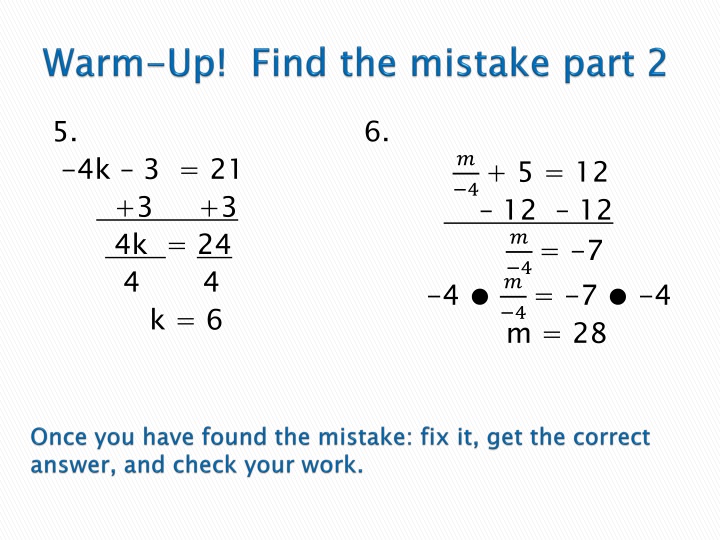

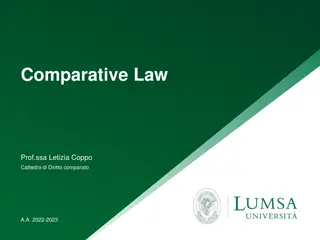
![Property Settlements in Family Law: Case Study of Stamatou & Stamatou [2022] FedCFamC1F 241](/thumb/63303/property-settlements-in-family-law-case-study-of-stamatou-stamatou-2022-fedcfamc1f-241.jpg)
